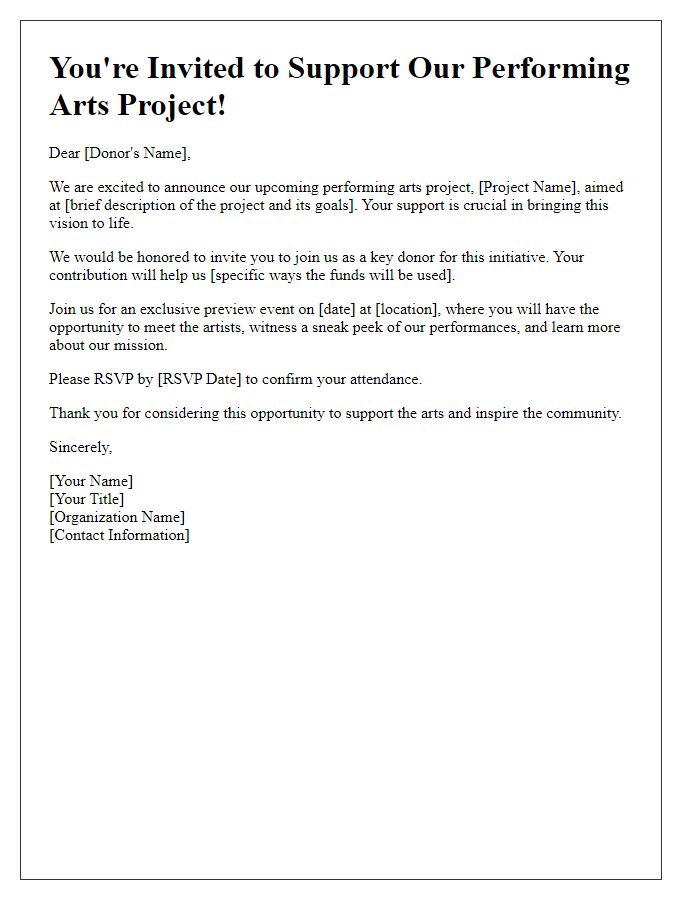Are you looking to make a meaningful impact in the arts community? Crafting a compelling sponsorship request letter can set the stage for a successful partnership. In this article, we'll explore the key elements to include in your letter that will resonate with potential sponsors and demonstrate the value of supporting your project. Join us as we dive into practical tips and examples to help you write an engaging request that stands out!

Compelling project description
The upcoming "Riverside Art Festival," set to take place in June 2024 at the picturesque Riverside Park in the heart of Minneapolis, aims to celebrate local artists while fostering community engagement. This vibrant event will showcase over 100 artists across diverse mediums including painting, sculpture, and digital art. Interactive workshops will provide attendees the opportunity to create their own masterpieces, led by renowned Minneapolis artists. The festival is expected to draw approximately 5,000 visitors, promoting local culture and arts education, and highlighting the historical significance of the Mississippi River as a source of inspiration for many artists. By partnering with local businesses and sponsors, this initiative seeks to create a sustainable platform for emerging artists, while enhancing the city's cultural landscape, making art accessible for everyone in the community.
Clear objectives and goals
Art projects often require financial support to achieve clear objectives and goals. A well-defined objective, such as enhancing community engagement through a mural painting in downtown areas like Brooklyn, can foster local pride and beautify the neighborhood. The goal might involve organizing workshops that involve local artists in teaching techniques, encouraging participation from underrepresented groups within a diverse population of over 2.5 million residents. Successful completion of the project could increase foot traffic in these areas by an estimated 30%, promoting local businesses. Additionally, collaboration with schools could incorporate educational components in the curriculum, aligning with initiatives aiming to improve arts education accessibility for students from varied socioeconomic backgrounds. Sponsorship would directly contribute to tangible outcomes, demonstrating commitment to cultural enrichment while providing visibility for supporting businesses.
Audience and demographic insights
The arts project aims to engage a diverse audience, consisting primarily of local community members aged 18 to 45 years, including students, professionals, and families residing in downtown areas such as Brooklyn, New York. In 2022, the Brooklyn Community Board reported a population of over 2.7 million, with approximately 30% identifying as artists or creatives. Engagement surveys indicate a high interest in visual arts, with 65% of respondents attending gallery openings or cultural events regularly. Educational workshops and interactive installations attract younger demographics, particularly college students from institutions like Pratt Institute, contributing to a vibrant arts culture. The project will also aim to reach underrepresented communities, resulting in broader inclusivity.
Sponsorship benefits and opportunities
An arts project sponsorship proposal outlines structured opportunities for businesses to engage and promote their brand at high-profile community events. Businesses gain exposure through promotional materials, logos displayed at venues, and mentions in press releases, reaching diverse audiences including art enthusiasts and local communities. Sponsor recognition may occur in social media campaigns, newsletters, and event programs, amplifying brand visibility. Additionally, businesses can participate in exclusive networking events with artists, creating valuable connections. Research indicates that 72% of consumers are more likely to support brands engaged in community initiatives, enhancing corporate social responsibility profiles. Overall, sponsoring an arts project contributes not only to cultural enrichment but also to enhanced brand loyalty and community goodwill.
Detailed budget and funding needs
Sponsorship requests for arts projects often require clarity in budgeting and funding needs. A detailed budget outlines costs associated with materials, labor, venue rental, marketing, and administrative expenses. For example, an art exhibition may list expenses like $2,000 for venue rental at Gallery Square in New York City, $1,500 for art supplies, and $800 for marketing materials. Identifying funding needs, such as an overall goal of $10,000 to cover all expenses, ensures potential sponsors understand the financial landscape and the impact their support will have on the project's success. Transparency in financial documentation fosters trust and demonstrates commitment, encouraging sponsors to invest in creative initiatives.













Comments